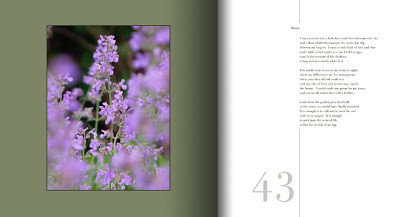Beth Kephart's Blog, page 125
July 2, 2013
Dr. Radway's Sarsaparilla Resolvent: some kind words from Savvy Verse & Wit
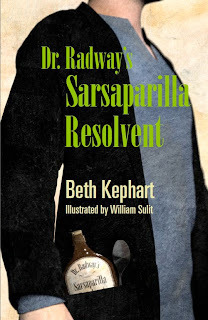
My friend Serena Agusto-Cox was an early reader of Dangerous Neighbors, my Centennial Philadelphia novel. She wondered, when she finished reading, about that character William, who plays a secondary role in Neighbors, and when I had in hand finished copies of Dr. Radway—a book in which William stars—I sent one her way.
She writes thoughtfully and kindly here about the story, and on this day, when I'm thinking so much about my city, I am particularly grateful.
Thank you, Serena. A small part of her review is here, below. The whole can be found here.
Kephart brings home the pressure of change and darkness with the
thrumming of the machines, the locomotive commotion, and the constant
mechanization of the city pounding in the background. While the
industrialization signifies a change and progress that can be beneficial
and create opportunity, there also is the darker underbelly of those
changes that must be dealt with — the corruption and the abuse of those
willing to take advantage of their position and of others. There is a
keen juxtaposition of this in the characters of Officer Kernon and the
Ledger’s editor Mr. Childs — one who abuses his position to get what he
wants and the other who offers his aid in the form of mentoring and
money to young men in need of guidance.




Published on July 02, 2013 03:10
July 1, 2013
managing time: a lesson from Jo Ann Beard and The Boys of My Youth
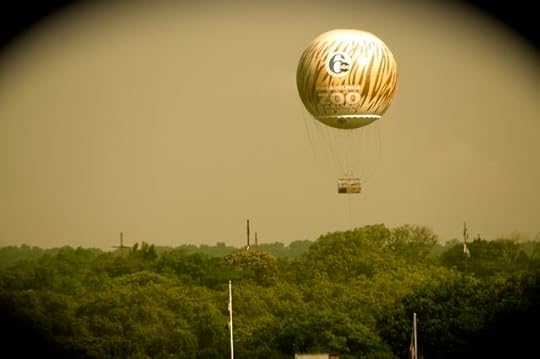
The Boys of My Youth, Jo Ann Beard's collection of autobiographical essays, remains, all these years post publication, one of the most remarkably inventive exemplars of creative nonfiction in our collective possession. Gifted, gutsy, astonishing, luminous, heartbreaking—all these words have been used to describe Beard's truth-inspired stories of growing up (read "Cousins") and tragedy (her famous "The Fourth State of Matter," which sears each time it's read). When I want to remind myself that it hasn't all already been done with language, I read Beard. I also read her to admire her gift for stopping and extending time.
Here is a paragraph that caught my eye as I was reading yesterday. It's a parade scene. Jo Ann and her cousin are young. One of Jo Ann's sisters simply can't wait any longer to toss her baton into the air.
Here is what Jo Ann tells us she sees:
For a long, gleaming moment it hangs there, a silver hyphen against the hot sky. Over the hectic heads of the children and the smooth blue-and-white blur of crepe-papered spokes and handlebar streamers, above the squinting smiles and upturned eyes, a silver baton rises miraculously, lingers for a moment against the sun, and then drops back down, into the waiting hand. ("Cousins")
Read it again. We are startled, first, by the surprise imagery—the silver hyphen, the hectic heads, the hot sky. We are startled into paying close attention, and time is suddenly ticking on a slow motion clock. Now Beard keeps our eyes on the ground—on the smooth blue-and-white blur of crepe-papered spokes and handlebar streamers—so that for a moment we lose track of the baton, must assume that it is rising still, that it is going up up up above our heads. Beard establishes the distance between earth and sky; she extends the distance. And now the sound of the passage shifts—the language cools and simplifies. The baton "drops back down, into the waiting hand" because magic, in its final moment, does not need exclamation marks. The baton takes its long way up, and then it is dropped and snapped and clutched—quick, decisive.
Lessons on time.




Published on July 01, 2013 05:28
June 30, 2013
Philadelphia in Pictures: Paine's Park, Boathouse Row, Water Works, Project Flow
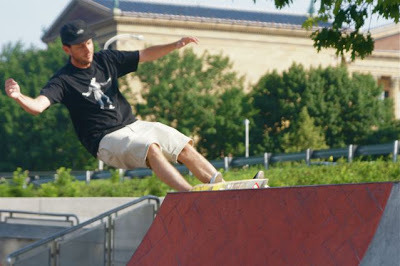
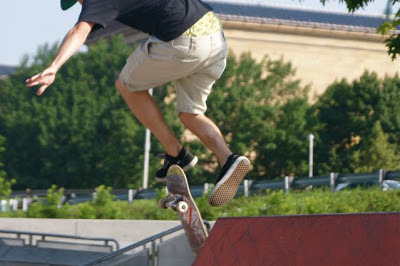

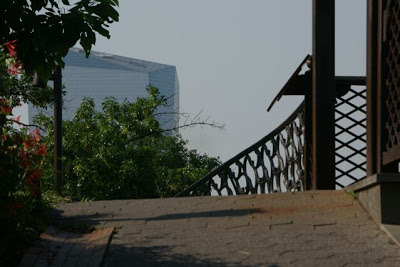

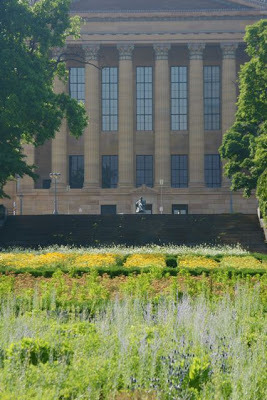
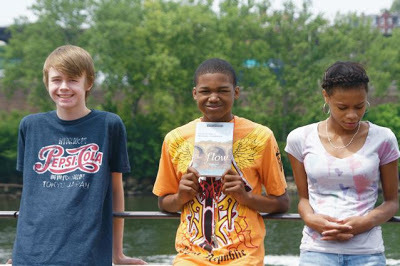
I go nowhere without one of my cameras, and so, on Thursday, as I made my way to my morning of chilling with the teen writers of Project Flow, I stopped along the Schuylkill Banks and snapped a few shots. They capture the heat and color of the day.
That's Paine's Park up there, the brand-new skateboard park that sort of blew me away with its size and sweep; that's the Philadelphia Art Museum in the background. My friend Mike rides the curves of this park every weekend morning. I could have sat and watched for hours.
And then the Fairmount Water Works Interpretive Center and then a sneaky shot of Cira Centre. Cira is a Cesar Pelli designed/Brandywine Realty Trust building that marked the start of University City's renaissance. It is also the brain child of Jerry Sweeney, a city visionary whose leadership along the Banks and within the gridded city is largely responsible for changing the way Philadelphians and friends experience the city. I'm proud to count Jerry as a friend.
Next a broader view of the Schuylkill and Boathouse Row.
Next the back face of the museum with its fields of flowers.
Finally a few of the young people I met while talking about rivers and words.
Come to Philadelphia.




Published on June 30, 2013 03:44
June 29, 2013
Two Boys Kissing/David Levithan: Reflections
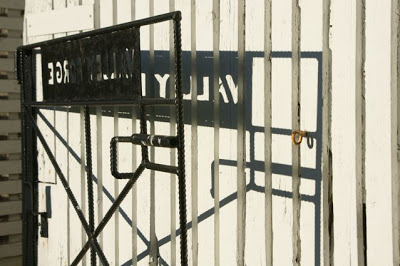
Beneath the shade of a tree I sat suspended between two deck chairs and a David Levithan story.
I sat spellbound.
I had begun the book, Two Boys Kissing (Random House, August 2013), a few days ago on a train and had nearly missed my stop. I had picked it up again today, after the errands were done. I'd wanted a clean house and a full refrigerator, no chance for any niggling interruptions, for there are books, and there are books. Two Boys Kissing is a book.
About a marathon kiss between two best friends in a public place, in a still-jarring world. About the lives beyond the kiss—a long-time couple and a brand-new couple and a boy who doesn't believe he'll ever fit in. About the parents and friends and teachers and bullies and sisters and aunts who make the world scary and safe. About those who died from disease and despair and still have stories to tell; they miss the sun, they miss the chance at love, they miss how much it must hurt to kiss for thirty-two unbroken hours. They narrate, exhilarate, caution, scream—these men who have gone on, these men who watch boys who don't know everything yet about right now, or the future. They prowl into beating hearts and silk-bind separate narratives and most of the time they cannot be heard, but sometimes, it seems, they can.
David Levithan writes big stories. He has countless definitions, and proof, of love. He gives no credence to the idea of the impossible. Two Boys Kissing commands the page and shifts perspectives. It validates first love, endangered love, once love, future love.
It says someone out there cares.
It says live:
Waking is hard, and waking is glorious. We watch as you stir, then as you stumble out of your beds. We know that gratitude is the last thing on your mind. But you should be grateful.
You've made it to another day.




Published on June 29, 2013 14:14
June 28, 2013
Desire: a wedding anniversary poem
Published on June 28, 2013 09:22
June 27, 2013
Project Flow, Teen Writers, and the Color of Life at the Fairmount Water Works Interpretive Center
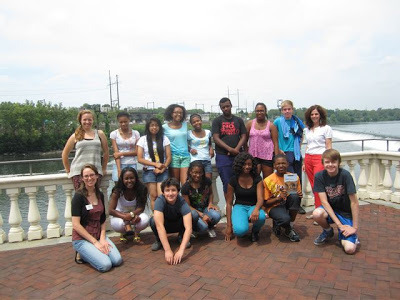
Take a look at those faces (well, all except for the old lady in orange pants). This is the company I had the privilege of keeping earlier this day, as a guest of the Project Flow program sponsored by Karen Young and the Fairmount Water Works Interpretive Center. Rising ninth graders—young souls brought from schools all over the city. A medley of projects created and taught by teachers who love words, science, and art. The leadership of Ellen Freedman Schultz, the FWWIC education and outreach coordinator.
This morning, I had the chance to talk to the young people about my three Philadelphia books—all of which have pivotal scenes on the river. One, FLOW, is entirely about the river, while DANGEROUS NEIGHBORS finds its protagonists skating on its frozen skin (with calamitous results) and DR. RADWAY'S SARSAPARILLA RESOLVENT features an historic river race. But mostly we talked about rivers and transcendent language and mellow yellow fish (as well as gold ones). By way of introduction, I asked the students to reflect on the colors of their lives. Their work was so exceptional that I promised to share it here, after shedding a little tear (so did someone else in the room! twice! we caught him!).
I like nothing more than chilling with people like these young souls.
The color of my life is a pink and a blue fighting over a green. Pink wants green to be pink and the blue wants green to be gold when green just wants to be green and left alone.
— Tiara
The color of life is a red orange flame, when blue cooler yet warmer, and black when deceased.
— Rafael
The color of my life is a deep shade of blue. A cool, calm, collected blue. A quiet silent in the night blue. And sometimes a sad blue. But on some days, this blue turns as bright as an afternoon sky.
— Liam
The color of my life is magenta. It's a color that's different and vibrant but can also be very mellow. I believe that magenta can never blend in. It's a color that can and always will stick out.
— Kai
Shades of yellows, oranges, reds, pinks, and purples along with the pale blue that I recognize wherever I go. As we travel back home from any city when I say goodbye from the car window. As well as before I doze off on the plane ride home from another country.
— Olivia
The rainbow, for all the crazy emotions I feel and when and how they come out.
— Rashae
The color of life is a brilliantly bright orange that shines pure, untouched. It is like the age of the sun except with a perfect unblemished glow.
— Jake
The color of my life is a light blue. It was once a very dark blue close to black-purple. As the story of my life goes on the blue gets lighter and lighter defining the very exciting and depressing point in my life.
— Erika
The color of my life is red because it's passion. The reason why I pick red is because it is the color of my passion.
— Nafese
So the color of my life is nothing. I don't think my life has a color or will ever have one, well, not until I'm gone from this world, but my life would be what I want to make it be. If I want it to be red I'll make it red. If I want it to be blue, I'll make it blue. But until I'm on my deathbed I will never know because I didn't live it yet.
— Juan
A brief P.S. When I returned home today, I had three notes about our river. One included a link to this gorgeous new review of FLOW, a book published several years ago. My thanks to Tina Hudak of the St. Albans Lower School Lower School Library Collection, in Washington, DC.




Published on June 27, 2013 11:45
June 26, 2013
Main Point Books and When Women Were Birds/Terry Tempest Williams: Reflections
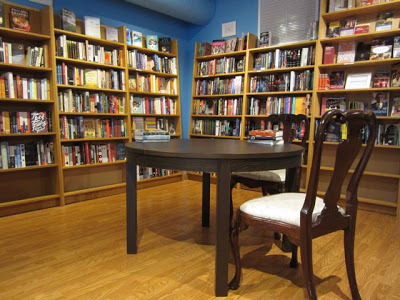
This past Monday I stepped inside a brand-new independent bookstore.
Let me repeat that: a brand-new independent bookstore.
Main Point Books of Bryn Mawr provides a little extra proof (for those who doubt) that both books and those who love them are still very much with us here, in our twenty-first century. Cathy Fiebach, the store's owner and a Penn alum, has placed her shop right next door to a cupcake house (oh, those cupcakes), on the main drag of Lancaster Avenue. She has created a warm and welcoming space, a shop that, during my longish stay (in the company of the writer Sarah Laurence), was bustling with readers of all ages, and with conversations of the typography and paper sort. What do you love? What do you read? What do you have?
Find me a story.
I bought When Women Were Birds: Fifty-Four Variations on Voice by a writer who has always intrigued me, Terry Tempest Williams. Williams combines ferocity with a very particular brand of lyricism. She lives her life large (as an activist, an environmentalist) and writes it with care, and in this case her prompt—her exploration—concerns the blank journals her mother bequeathed to her.
On the very first page, we learn of the shock of that blankness. It is shortly after the passing of Terry's mother:
On the next full moon I found myself alone in the family home. I kept expecting Mother to appear. Her absence became her presence. It was the right time to read her journals. They were exactly where she said they would be: three shelves of beautiful clothbound books; some floral, some paisley, others in solid colors. The spines of each were perfectly aligned against the lip of the shelves. I opened the first journal. It was empty. I opened the second journal. It was empty. I opened the third. It, too, was empty, as was the fourth, the fifth, the sixth—shelf after shelf after shelf, all my mother's journals were blank.
What do those journals mean? What mystery do they hold, what lesson do they teach, what room do they make for Terry? Over and over again, Terry examines the possible, refutes the obvious, rejects the simple, and in doing say she tells the rough story of her own life—her Mormonism, her love of country, her marriage, her explorations beyond marriage, her one night in a jail, and a frightening diagnosis. Over and again she designates and signifies the blank journals, and then, again, she looks past her own momentary understanding.
When Women Were Birds is often stunning. It can, at times, feel rhetorical, or deliberately obfuscating, or overly mythical—but that is the point. This book offers fifty-four variations on voice, and no easy answers. It is memoir—personal and unifying, wild and precise, needled together by this simple fact, Williams' words:
Each day we begin with the empty page.




Published on June 26, 2013 10:23
Join us for the Philadelphia Business Journal Women's Conference
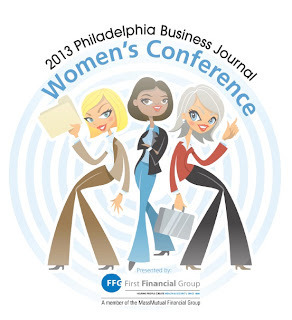
In just a few weeks—on July 18th—I'll be joining the Philadelphia Business Journal's 2013 Women's Conference as a coffee klatch speaker on the topic of (wait for it) the making of memoir—sharing an early look at Handling the Truth with the participants. The event will take place in the Crystal Tea Room in the Wanamaker Building from 9:30 to noon. Interested? Well, then, I share news from the press release below:
Presented by First Financial Group, a member of the
MassMutual Financial Group, the event will gather over 400 of the region’s
newsmakers for a “Business of the Brand” panel discussion, reveal of the top
“100 Women Owned Business” list, and an expo with Coffee Klatch expert
sessions. A day of event raffle will benefit Susan G. Komen for the Cure, Philadelphia.
CBS 3, CW Philly and Macy’s are partners.
Philadelphia Business Journal is thrilled to be hosting this
event for the third year in a row. The speakers and list makers represent a
variety of interests and companies in the Philadelphia region. There will be
something for everyone this year.
Event tickets are available for $65 each, with other
enhanced packages. To purchase tickets, visit http://bizj.us/sc82v




Published on June 26, 2013 03:45
June 25, 2013
Small Damages Paperback: the gorgeous stepback
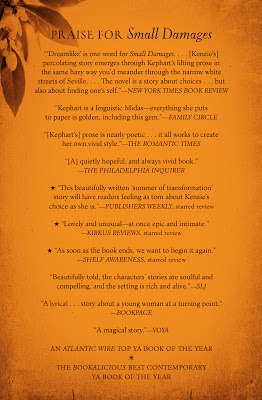
Sometimes you write books and love those books and they disappear. Sometimes they're never published. Sometimes the person who doesn't love your book is precisely who you thought you were writing your book for.
And sometimes you get so hugely lucky. You find an editor (and friend) like Tamra Tuller and a house like Philomel, a publicist like Jessica Shoffel and a friend like Michael Green. And then (you can't believe your continuing luck) you get a paperback team like Eileen Kreit and Krista Asadorian, who package the book with great grace.
Small Damages will be released by Penguin as a paperback on July 11th, and include this gorgeous stepback page. I am so grateful. I'll be launching the paperback in Old Town Alexandria, VA, and would love to see you there.
July 27, 2013, 3:30 - 5:00 PM
Launching Small Damages paperback/Memoir Workshop
with Debbie Levy
Hooray for Books
Old Town Alexandria, VA




Published on June 25, 2013 09:39
Philadelphia's Literary Legacy: now up at the Philadelphia International Airport
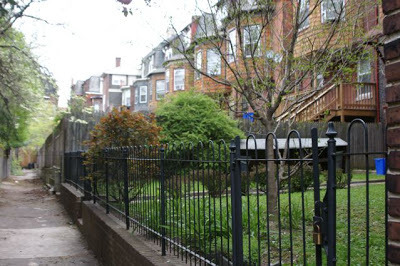
My dear friend Mike Cola—former president at Shire, bird lover, nest finder, renaissance kind of guy—wrote yesterday to say that, upon passing through the Philadelphia International Airport, he had found my book looking back at him.
I could not be more stunned, nor more grateful, to be one of the fifty authors included. I look forward to the official unveiling next Tuesday morning with my city's mayor, the head of the Free Library, and others. I think I'll have to get my hair done.
The official release:
Philadelphia’s Literary Legacy:
Selected
Authors, Playwrights, and Poets –
From
Writers of the Declaration of Independence to Present Day
In Partnership with the Free Library of
Philadelphia
Terminal A-East, ticketed passengers
Since
the writing of the nation's Declaration of Independence and the Constitution, Philadelphia
has been home to many celebrated authors. This exhibition is a visual overview
of Philadelphia's rich literary past and present. Given the theme, librarians
from the Free Library of Philadelphia were invited to select 50 authors,
playwrights, and poets from various eras and genres that represent the breadth
of the region’s literary creativity.
The
Philadelphia area is proud to have nurtured literary excellence since the birth
of the nation with authors like Charles Brockden Brown, Benjamin Franklin, and
Thomas Paine to 19th century writers such as Louisa May Alcott,
W.E.B. DuBois, George Lippard, and Owen Wister. The Philadelphia region has
continued to foster modern authors including Lloyd Alexander, Pearl S. Buck,
Margaret Mead, and James Michener to today’s
contemporary authors, playwrights, poets, and children’s book illustrators
including the world renowned Berenstain’s, Sandra Boynton, Lorene Cary, Noam
Chomsky, Quiara Alegría Hudes, Solomon Jones, Ken Kalfus, Sonia Sanchez, Lisa
Scottoline, Jennifer Weiner, and David Wiesner.
All of
the authors represented in the exhibition are award-winning, best-selling
writers. Collectively, their literary achievements include the Nobel Prize for
Literature, Pulitzer Prizes for Literature, Pulitzer Prizes for Drama,
Caldecott Medals for the year’s most distinguished American picture book for children,
and Newbery Medals for the most distinguished contribution to American
literature for children.
From romance novels, historical novels, urban fiction, and
journalism to science fiction, Gothic fiction, young adult fiction, children’s
book illustration, comics, and books about linguistics, civil rights, and
anthropology -- these 50 authors exemplify Philadelphia’s diverse literary
legacy and continued contributions to the regional, national, and international
literary culture.




Published on June 25, 2013 03:50

